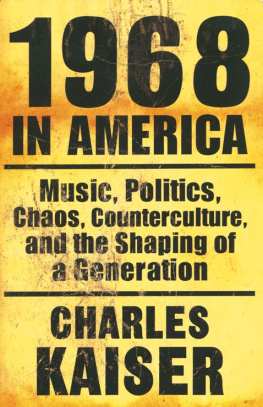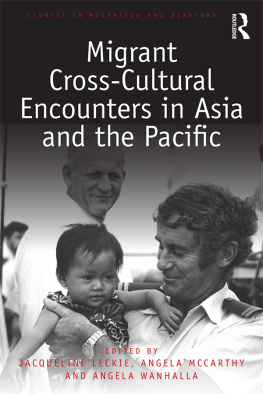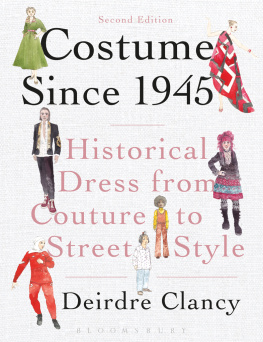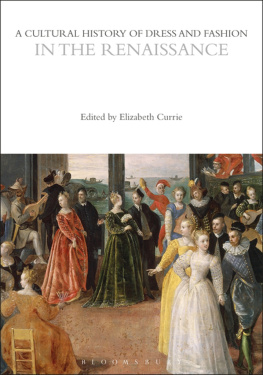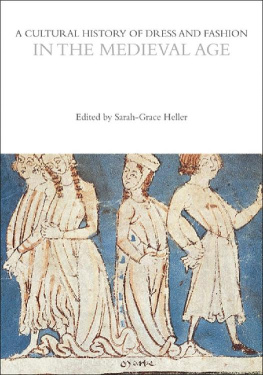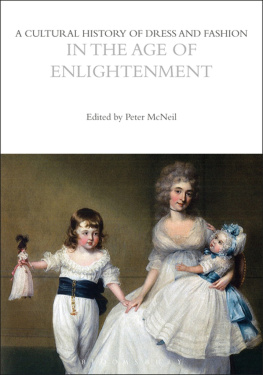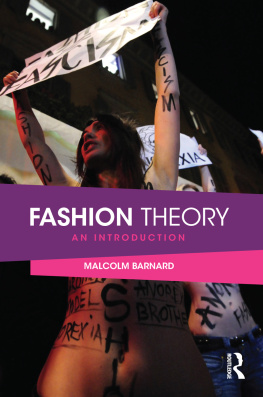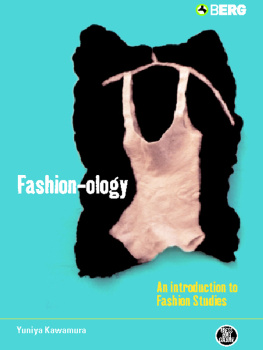Fashion and Cultural Studies
Fashion and Cultural Studies
Susan B. Kaiser

London New York
Contents
.
.
.
.
.
.
.
.
.
.
.
.
.
.
.
.
.
.
.
.
.
.
.
.
.
.
.
.
Fashion studies, cultural studies. This book reflects my long-term interest in bridging these fields, and I have many people to thank for their contributions to this journey. Faculty, students, and staff in the Division of Textiles and Clothing (TXC) at the University of California, Davis, have offered a collegial home/space for interdisciplinary exploration and risk taking, and I am extremely grateful. Students in my TXC undergraduate course, Style and Fashion Studies, have read (and tactfully critiqued) earlier drafts of many chapters. They have been an ongoing source of inspiration, critically and creatively challenging me as they have done their best to keep me current. I especially want to express my deep gratitude to the remarkable graduate teaching and research assistants with whom I have had the pleasure to connect the dots between fashion and cultural studies over the years: Sara Bernstein, Elise Chatelain, Yin-San Chen, Kadie Corless, Ely Estoesta, Anthony Freitas, Denise Green, Carol Hall, Tania Hammidi, Karyl Ketchum, Ryan Looysen, Sarah McCullough, Linda Matheson, Norah Sorensen, Nan Turner, and Yuchen Zhao. Their creative ideas for assignments and cultural resources, suggestions on earlier drafts, and ongoing enthusiasm and intellectual passion have been ever inspiring and sustaining. These and other former graduate students continue to be wonderful colleagues.
I am also very fortunate to have terrific colleagues across the UC Davis campus. I would like to express my deep gratitude to Joan Chandler for her friendship and ongoing support and inspiration. Thanks to Susan Avila and other faculty and students in Design for the intellectual stimulation you have provided. I am also very grateful for my dynamic exchanges with in the Cultural Studies Graduate Group; these exchanges have, for more than a decade, contributed greatly to my interdisciplinary thinking across the humanities and social sciences.
In particular, I am indebted to the Women and Gender Studies faculty and students at UC Davis for teaching me so much about the very meaning of collegiality, as well as intersectionality. Thanks for offering such a warm and stimulating home for interdisciplinary exploration. Collaborations with Judith Newton helped me to embrace feminist cultural studies as a field. Anna Kuhn has offered enduring support and friendship, for which I am most appreciative. She and Maxine Craig and Amina Mama read and offered constructive suggestions on portions of this manuscript. Many thanks, as well, to Liz Constable, Rosa Linda Fregoso, Gayatri Gopinath, Wendy Ho, Suad Joseph, Caren Kaplan, Luz Mena, Kimberly Nettles, Leslie Rabine, and Juana Rodriguez for all that I have learned from you in the time our paths have crossed.
I am so fortunate to have so many fashion studies friends and colleagues around the world: thanks especially to Janet Hethorn, Carol Tulloch, Joe Hancock, Heike Jenss, Mary Lynn Damhorst, Linda Arthur, Chris Breward, Patrizia Calefato, Jo Paoletti, and Efrat Tselon for the stimulating interactions and encouragement that have meant so much to this project.
Everyone at Berg has been enthusiastic about this project from the beginning and throughout its (extended) life. Thanks to Joanne Eicher and to Kathryn Earle for their intellectual leadership in the Dress, Body, Culture series. I have had wonderfully supportive and thoughtful editors and staff: Hannah Shakespeare, Julia Hall, Anna Wright, Sophie Hodgson, and Emily Johnston. All have exhibited the perfect blend of professionalism and patience. I also deeply appreciate the insightful analyses of the reviewers.
I could not have completed this book without the inspiration and support of my family. Thanks to my sisters Linda, Jeanette, and Pam, and to the memory of our parents, who taught us to imagine the future. Many thanks to Nathan and Christina for providing ideas, sharing references and popular cultural tips from sports to novels, and contributing to the photo collage of Sienna and, of course, for bringing her into our lives. Thanks, Sienna, for your fresh and humorous way of seeing and being in the world. Carolyn, P. K., and Chase have also provided a lot of spark, inspiration, and encouragement that have helped to keep me goingmany thanks! And last, but not certainly not least, I am indebted to Mark for being the best muse, as well as cook and confidante, whom one could ever imagine.
Fashion is not a thing or an essence. Rather, it is a social process of negotiation and navigation through the murky and yet-hopeful waters of what is to come. Fashion involves becoming collectively with others. When and where does this happen, and who gets to decide what constitutes fashion? Fashion materializes as bodies move through time and space. Time and space are both abstract concepts and contexts: the process of deciphering and expressing a sense of who we are (becoming) happens in tandem with deciphering and expressing when and where we are. This is not as simple as it may sound. It turns out that the process of deciphering and expressing this who, when, and where is an ongoing challenge of negotiating and navigating through multiple ambiguities and contradictions associated with the following:
- being an individual fashion subject in the context of a global economy, in which fashion flows through complex, transnational dynamics that are at once visual and material, virtual and tangible, local and global;
- embodyingsimultaneouslygender, race, ethnicity, sexuality, class, national identity, age/generation, place, and other positions that are themselves shifting through complex power relations;
- desiring at once to fit in with ones social world and to express some degree of uniqueness within that world; and
- an ever-changing interplay between freedoms and constraints; this interplay refers to an ongoing structure-agency debate in the social sciences and humanities.
Fashion is never finished, and it crosses all kinds of boundaries. It is ongoing and changes with each persons visual and material interpretations of who he or she is becoming and how this connects with others interpretations.
Fashion is also about producing clothes and appearances, working through ideas, negotiating subject positions (e.g., gender, ethnicity, class), and navigating through power relations. It involves mixing, borrowing, belonging, and changing. But it is also about matching, creating, differentiating, and continuing. It is a complex process that entangles multiple perspectives and approaches. The study of fashion, as well, requires integrative and imaginative ways of knowing. Throughout this book, I draw on fashion studies and feminist cultural studies concepts, metaphors, and models that challenge simple oppositional (either/or), linear (straight), and essentialist (predetermined, fixed, bounded) ways of thinking about and with fashion.
Oppositional thinking, for example, oversimplifies differences and limits options for the analysis of connections and entanglements. Framing fashion in either/or terms also prevents understandings of what the feminist spatial theorist Doreen Massey (1993) calls power geometry. That is, power is multidimensional, not just oppositional. Fashion helps us to contemplate power in ways that multiply, complicate, and intersect beyond oppositional thinking.
Next page


